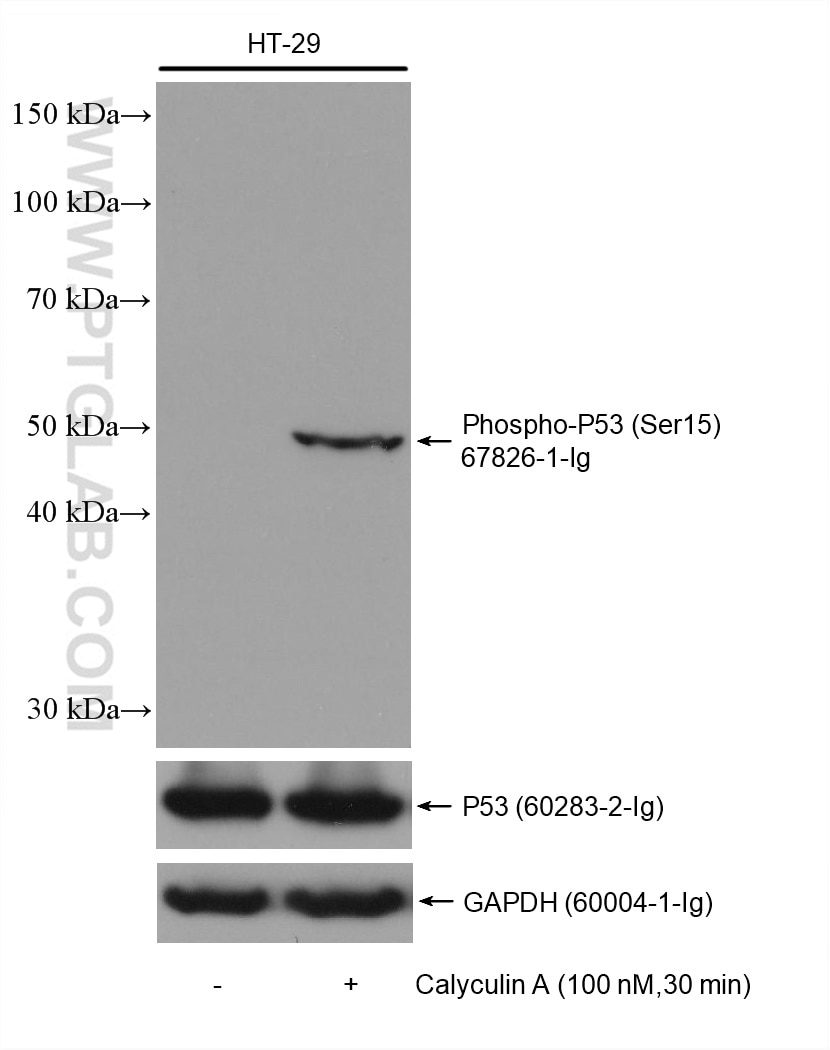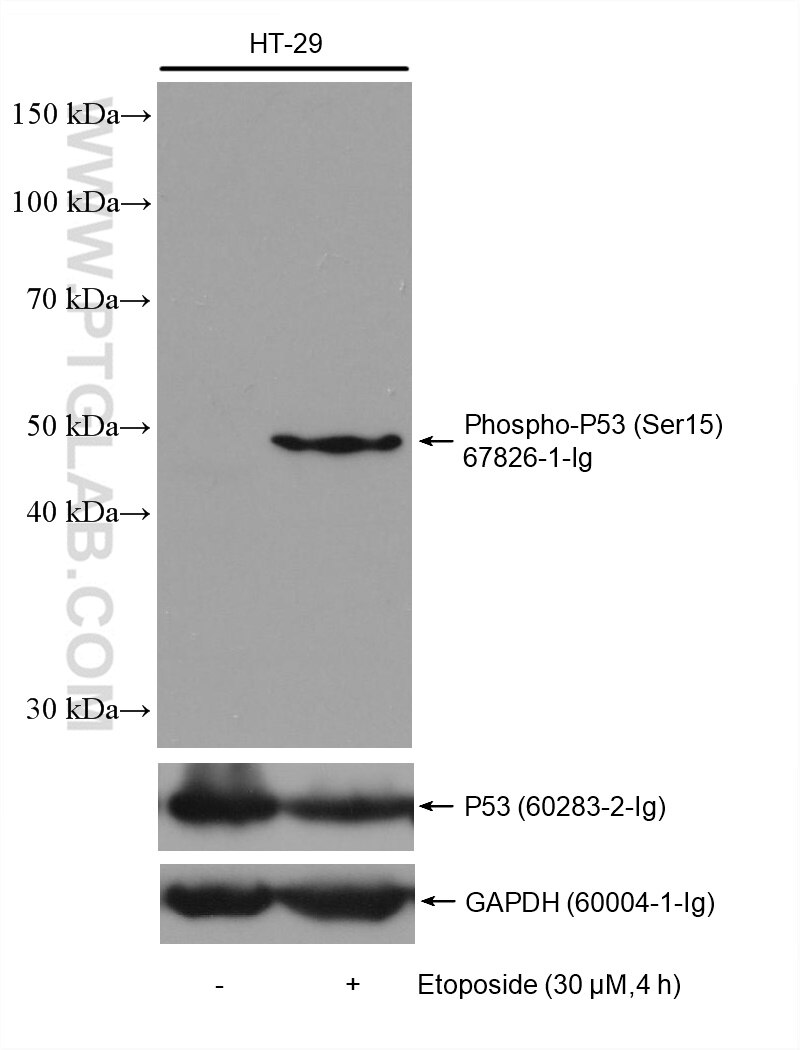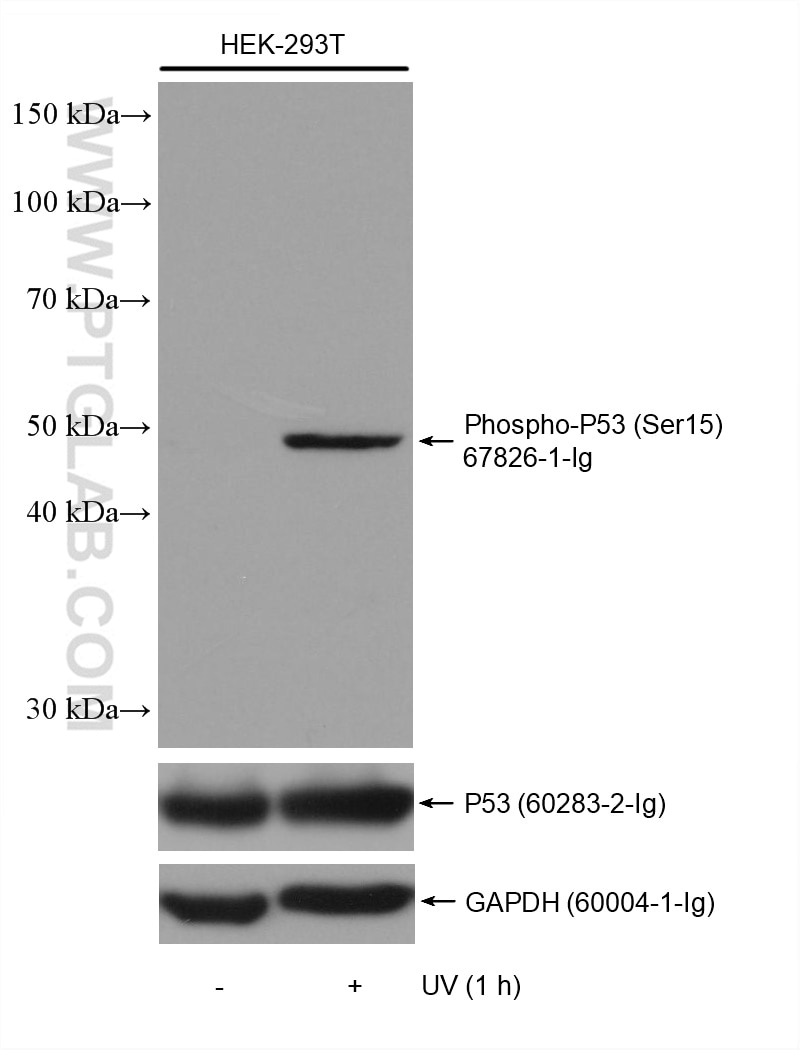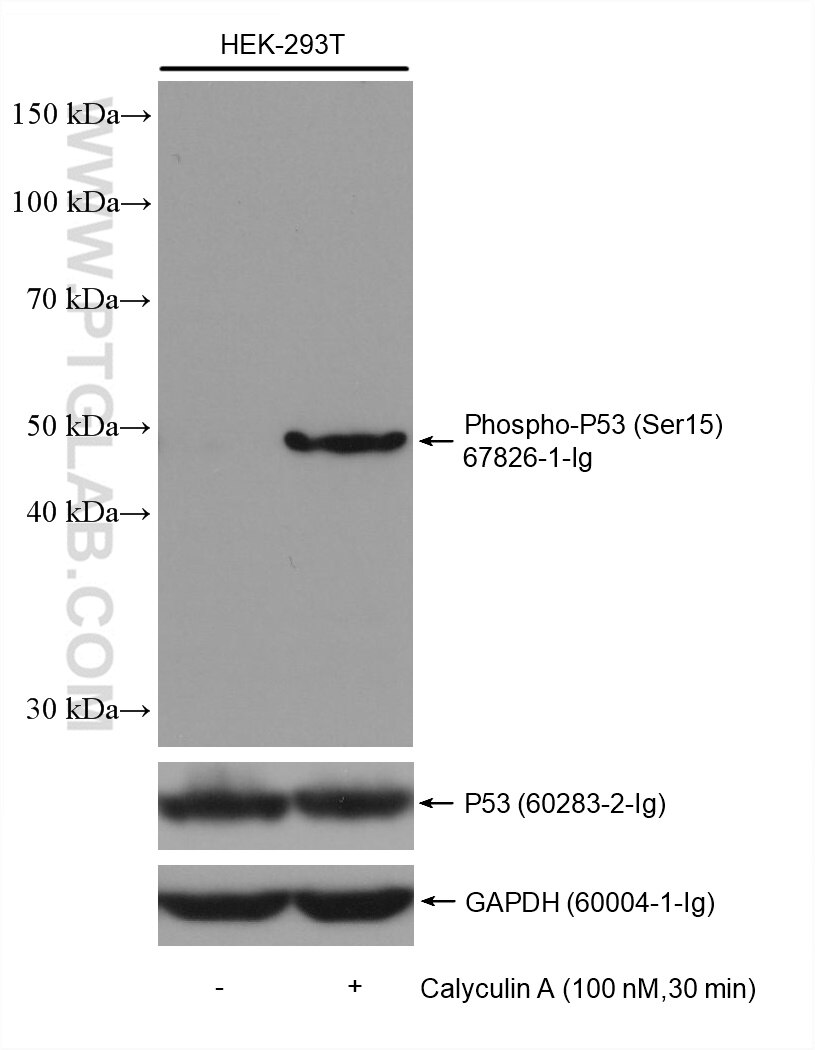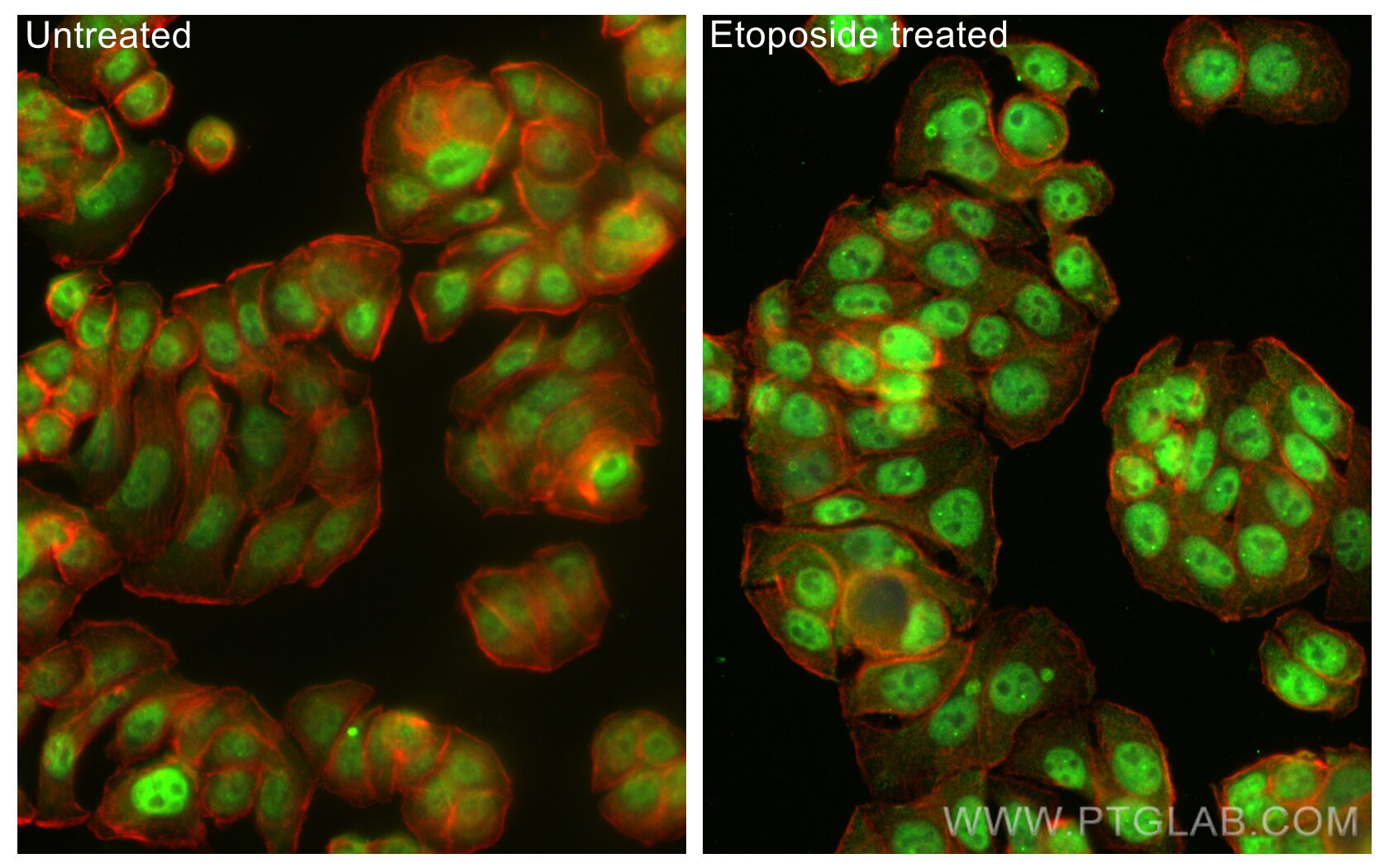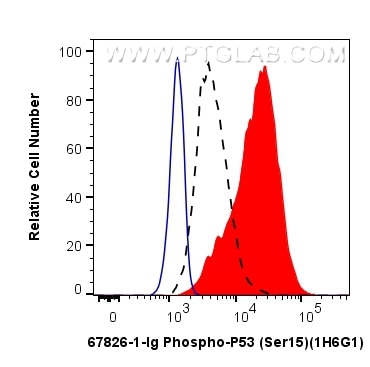Anticorps Monoclonal anti-Phospho-P53 (Ser15)
Phospho-P53 (Ser15) Monoclonal Antibody for WB, IF/ICC, FC (Intra), ELISA
Hôte / Isotype
Mouse / IgG1
Réactivité testée
Humain et plus (3)
Applications
WB, IHC, IF/ICC, FC (Intra), ELISA
Conjugaison
Non conjugué
CloneNo.
1H6G1
N° de cat : 67826-1-Ig
Synonymes
Galerie de données de validation
Applications testées
| Résultats positifs en WB | cellules HT-29 traitées à la calyculine A, cellules HEK-293, cellules HEK-293 traitées à la calyculine A, cellules HEK-293T, cellules HEK-293T traitées au UV, cellules HT-29 |
| Résultats positifs en IF/ICC | cellules HT-29 traitées à l'étoposide, |
| Résultats positifs en FC (Intra) | UV treated HT-29 cells, |
Dilution recommandée
| Application | Dilution |
|---|---|
| Western Blot (WB) | WB : 1:1000-1:6000 |
| Immunofluorescence (IF)/ICC | IF/ICC : 1:400-1:1600 |
| Flow Cytometry (FC) (INTRA) | FC (INTRA) : 0.13 ug per 10^6 cells in a 100 µl suspension |
| It is recommended that this reagent should be titrated in each testing system to obtain optimal results. | |
| Sample-dependent, check data in validation data gallery | |
Applications publiées
| WB | See 18 publications below |
| IHC | See 2 publications below |
| IF | See 2 publications below |
Informations sur le produit
67826-1-Ig cible Phospho-P53 (Ser15) dans les applications de WB, IHC, IF/ICC, FC (Intra), ELISA et montre une réactivité avec des échantillons Humain
| Réactivité | Humain |
| Réactivité citée | rat, Humain, porc, souris |
| Hôte / Isotype | Mouse / IgG1 |
| Clonalité | Monoclonal |
| Type | Anticorps |
| Immunogène | Peptide |
| Nom complet | tumor protein p53 |
| Masse moléculaire calculée | 44 kDa |
| Poids moléculaire observé | 53 kDa |
| Numéro d’acquisition GenBank | BC003596 |
| Symbole du gène | P53 |
| Identification du gène (NCBI) | 7157 |
| Conjugaison | Non conjugué |
| Forme | Liquide |
| Méthode de purification | Purification par protéine G |
| Tampon de stockage | PBS with 0.02% sodium azide and 50% glycerol |
| Conditions de stockage | Stocker à -20°C. Stable pendant un an après l'expédition. L'aliquotage n'est pas nécessaire pour le stockage à -20oC Les 20ul contiennent 0,1% de BSA. |
Informations générales
TP53, also known as P53 and NY-CO-13, belongs to the p53 family and has 9 isoforms. In SDS-Page, the observed molecular weight is about 53 kDa. TP53 acts as a tumor suppressor in many tumor types, including growth arrest or apoptosis depending on the physiological circumstances and cell types. It is involved in cell cycle regulation as a trans-activator that acts to negatively regulate cell division by controlling a set of genes required for this process. TP53 Localizes in the nucleus in most cells but found in the cytoplasm in some cells. (PMID: 26166714; PMID: 25225161)
Protocole
| Product Specific Protocols | |
|---|---|
| WB protocol for Phospho-P53 (Ser15) antibody 67826-1-Ig | Download protocol |
| IF protocol for Phospho-P53 (Ser15) antibody 67826-1-Ig | Download protocol |
| Standard Protocols | |
|---|---|
| Click here to view our Standard Protocols |
Publications
| Species | Application | Title |
|---|---|---|
Phytomedicine MaiJiTong granule attenuates atherosclerosis by reducing ferroptosis via activating STAT6-mediated inhibition of DMT1 and SOCS1/p53 pathways in LDLR-/- mice | ||
J Virol Hepatitis B doubly spliced protein (HBDSP) promotes hepatocellular carcinoma cell apoptosis via ETS1/GATA2/YY1-mediated p53 transcription | ||
Food Chem Toxicol Enhanced glutathione production protects against zearalenone-induced oxidative stress and ferroptosis in female reproductive system | ||
Front Pharmacol A New Chalcone Derivative C49 Reverses Doxorubicin Resistance in MCF-7/DOX Cells by Inhibiting P-Glycoprotein Expression. | ||
Toxicol Lett The mechanism of rh-endostatin-induced cardiotoxicity and its protection by dihydromyricetin[in vivo/in vitro, C57BL/6 mice, AC16 and hiPSC-CMs] | ||
World Neurosurg N-acetylserotonin protects rat nucleus pulposus cells against oxidative stress injury by activating the PI3K/AKT signaling pathway |
